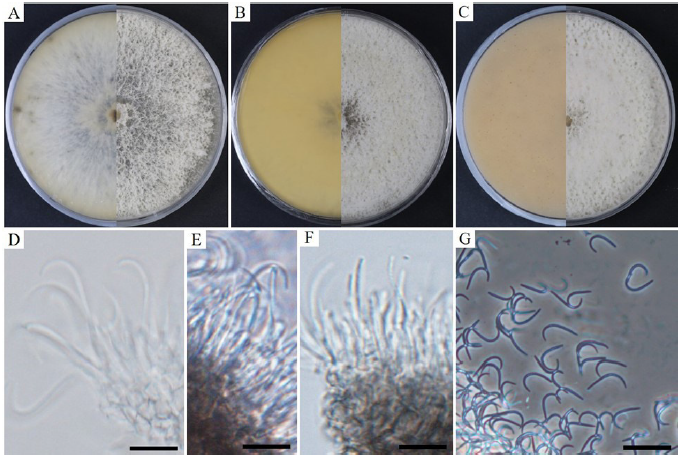Abstract
Three fungal strains belonging to the class Sordariomycetes were isolated from soil collected on Jeju Island and Gyeongsangbuk-do, Korea. They were identified as
Figures & Tables

Fig. 1. Cultural and morphological characteristics of KNU-JJ-1809. Colony on potato dextrose agar (A); malt extract agar (B); and oatmeal agar (C). Conidiogenous cells (D-F); beta conidia (G). Scale bars: D-G=10 μm.


